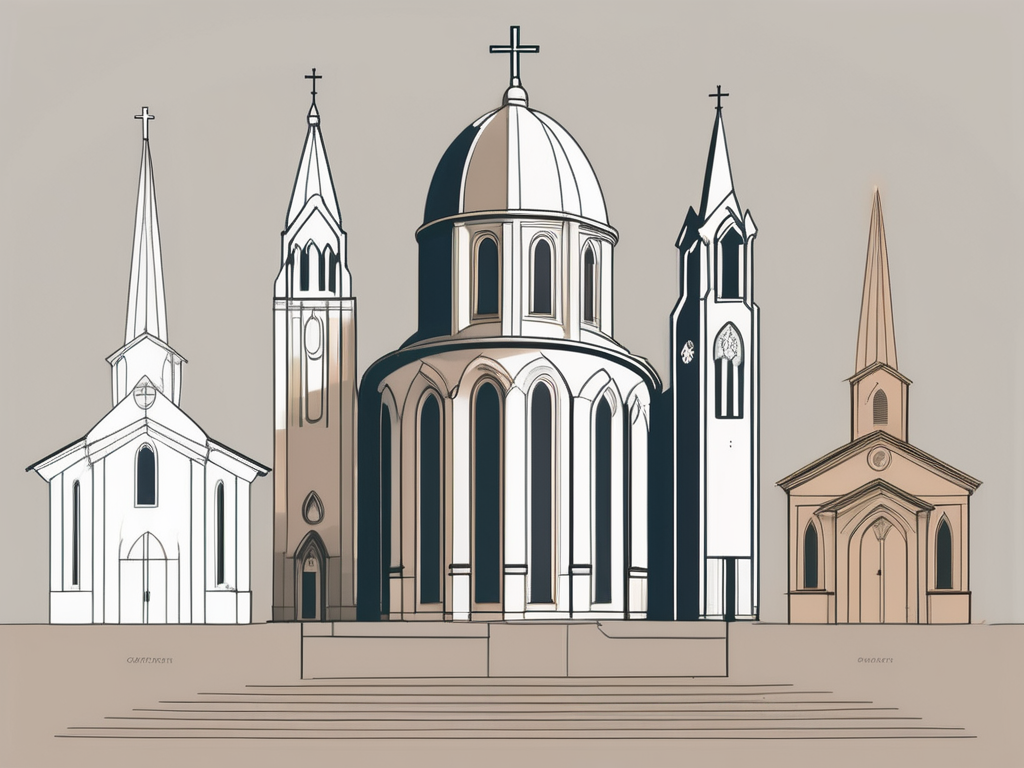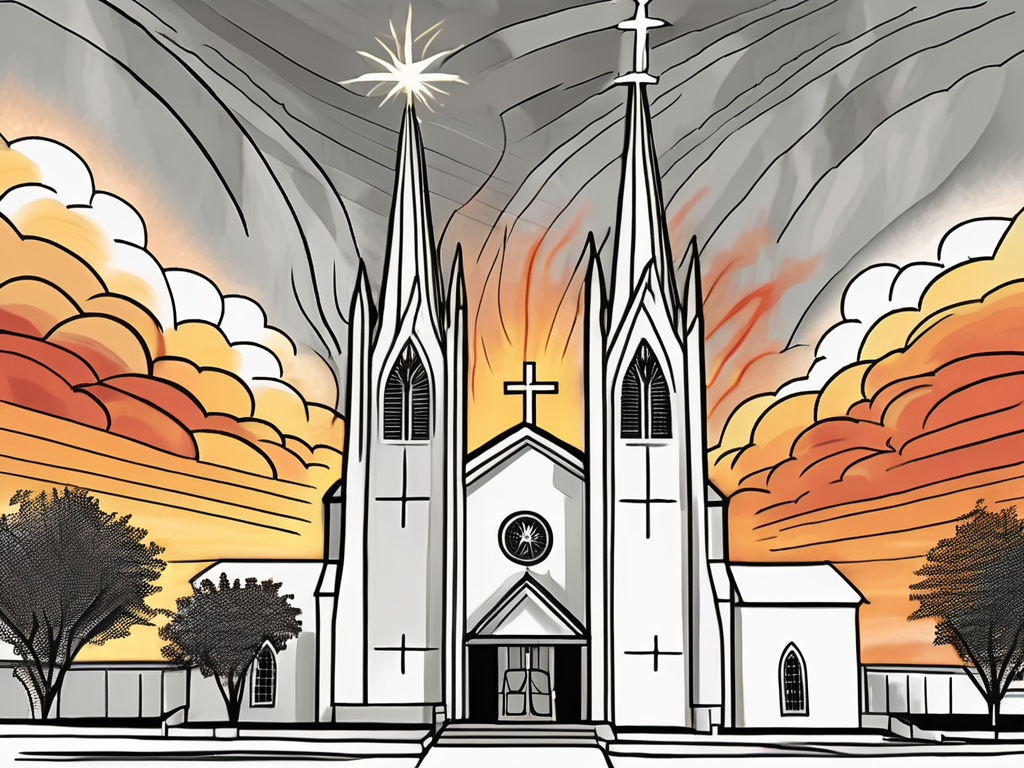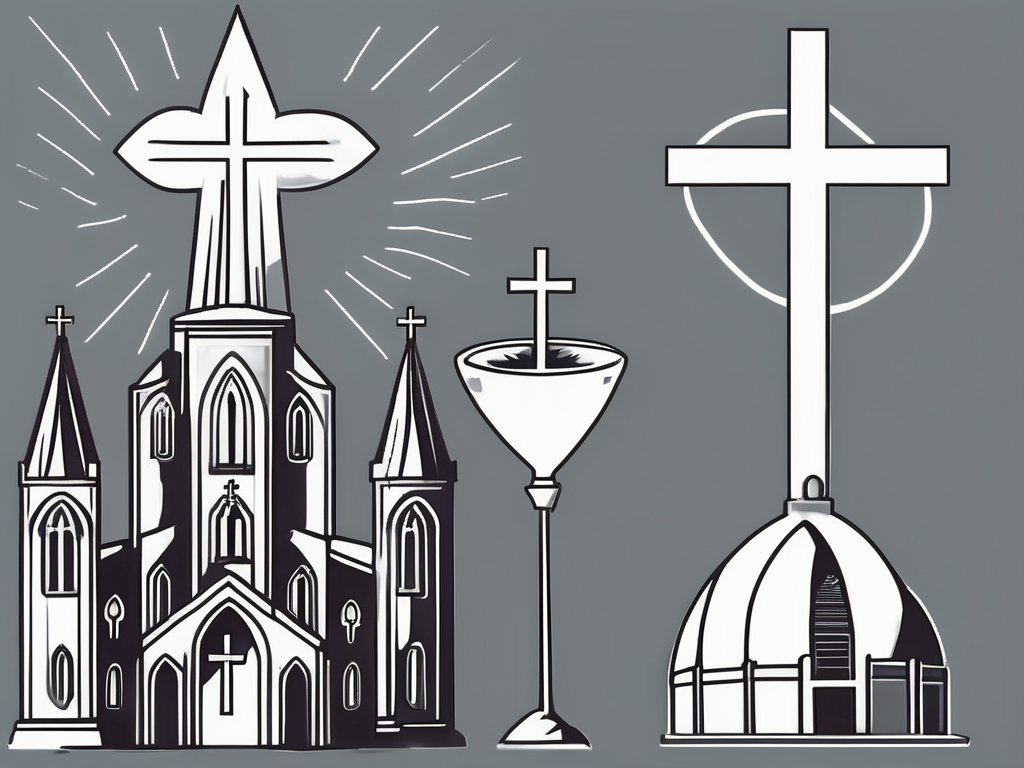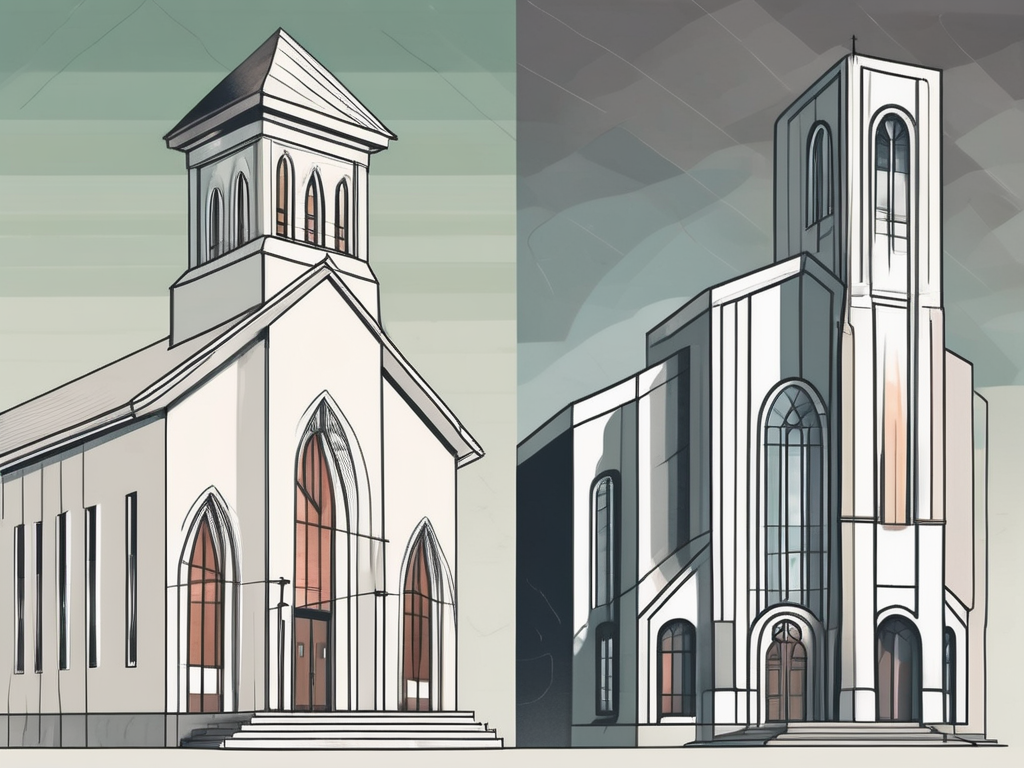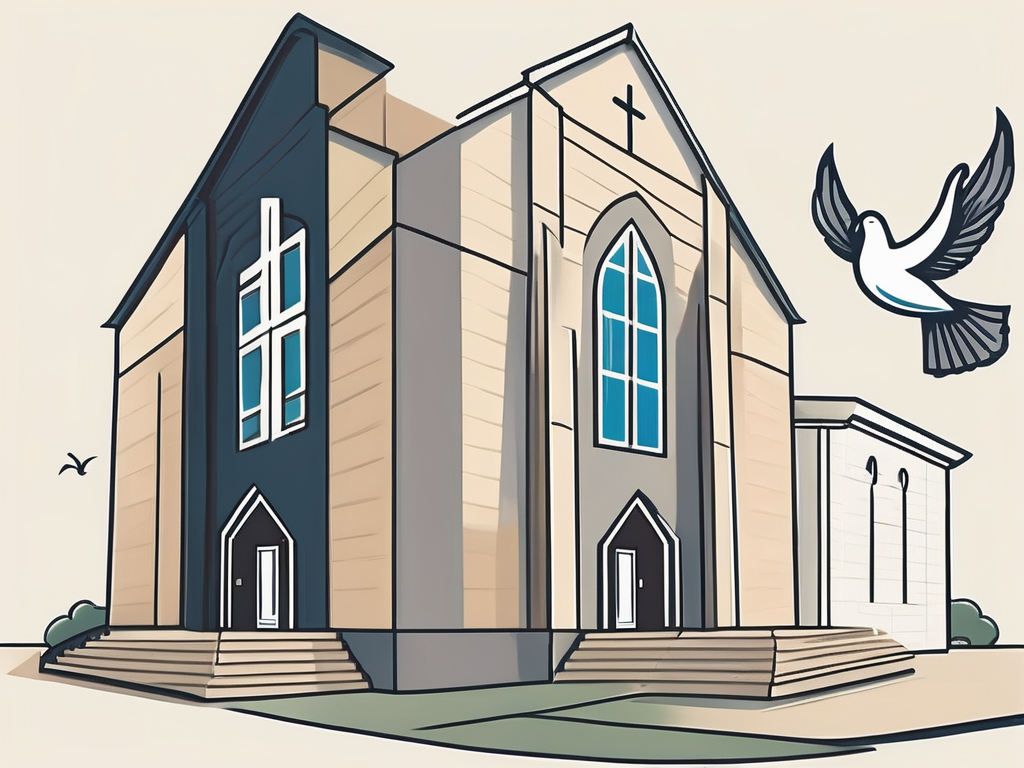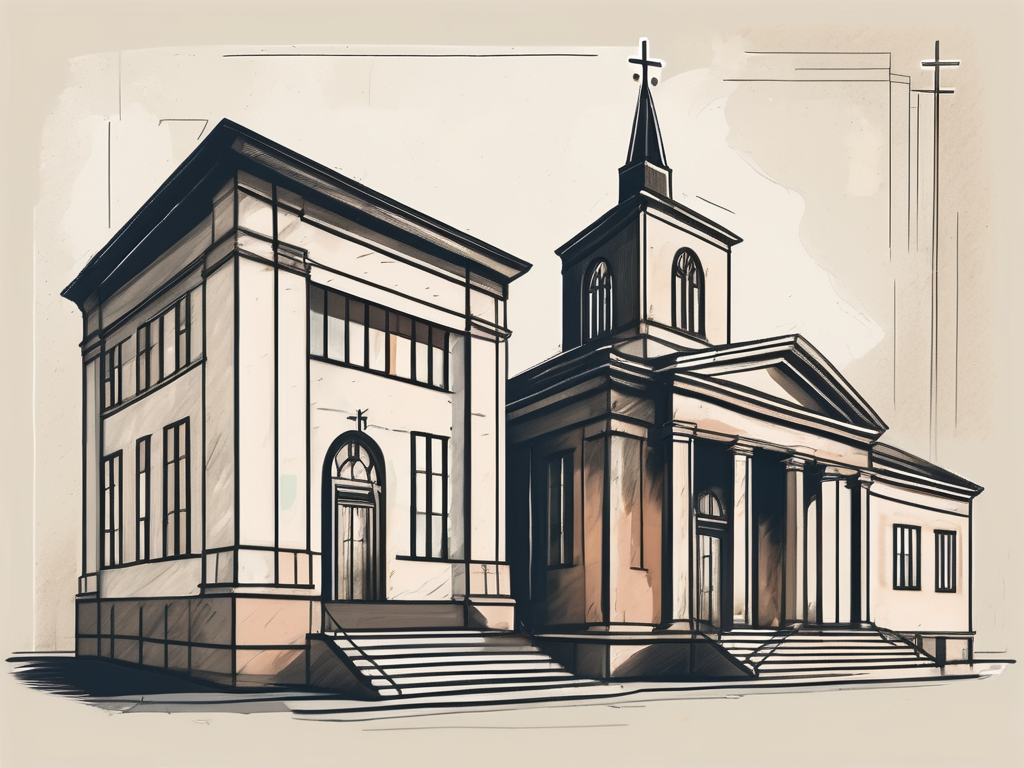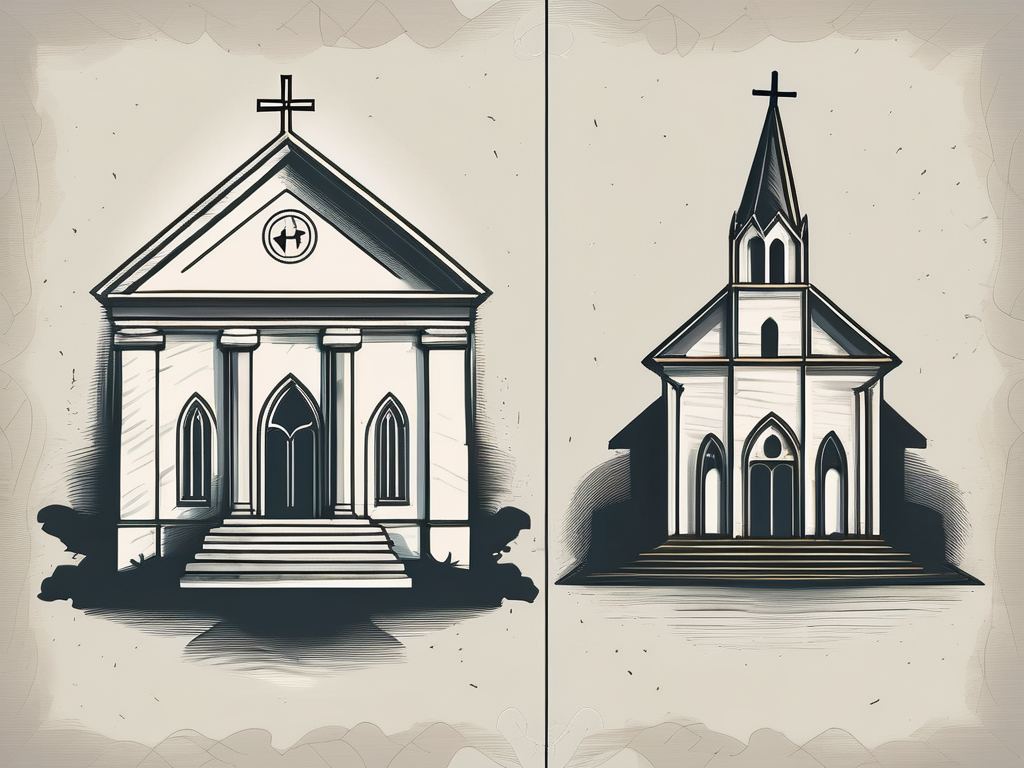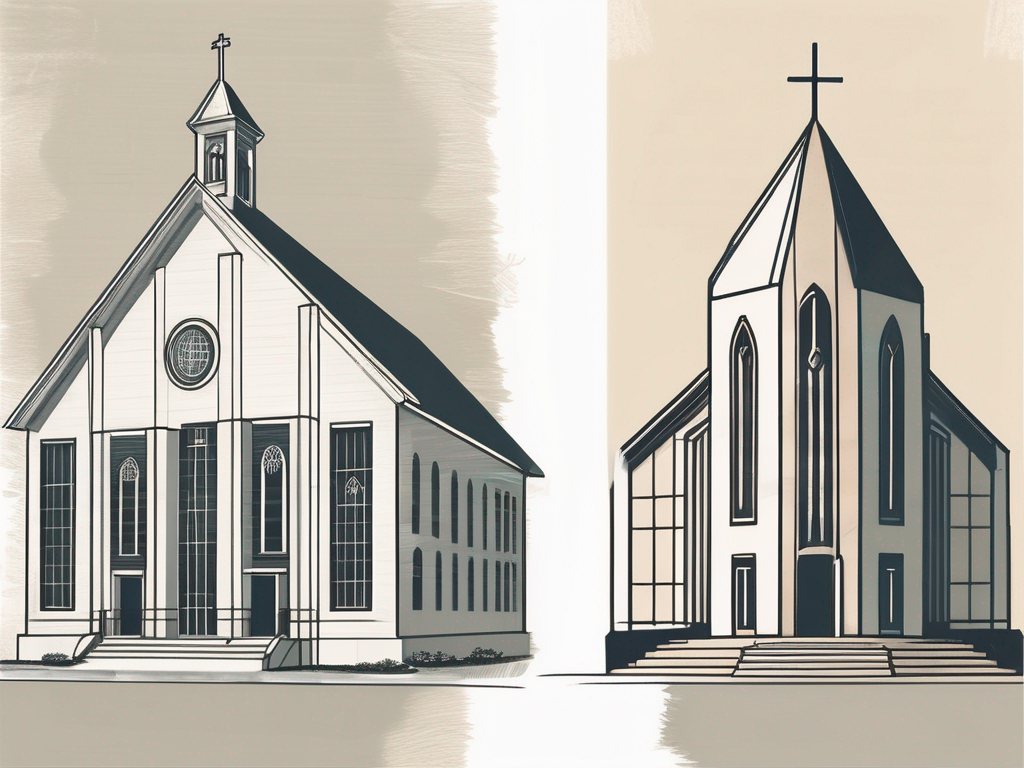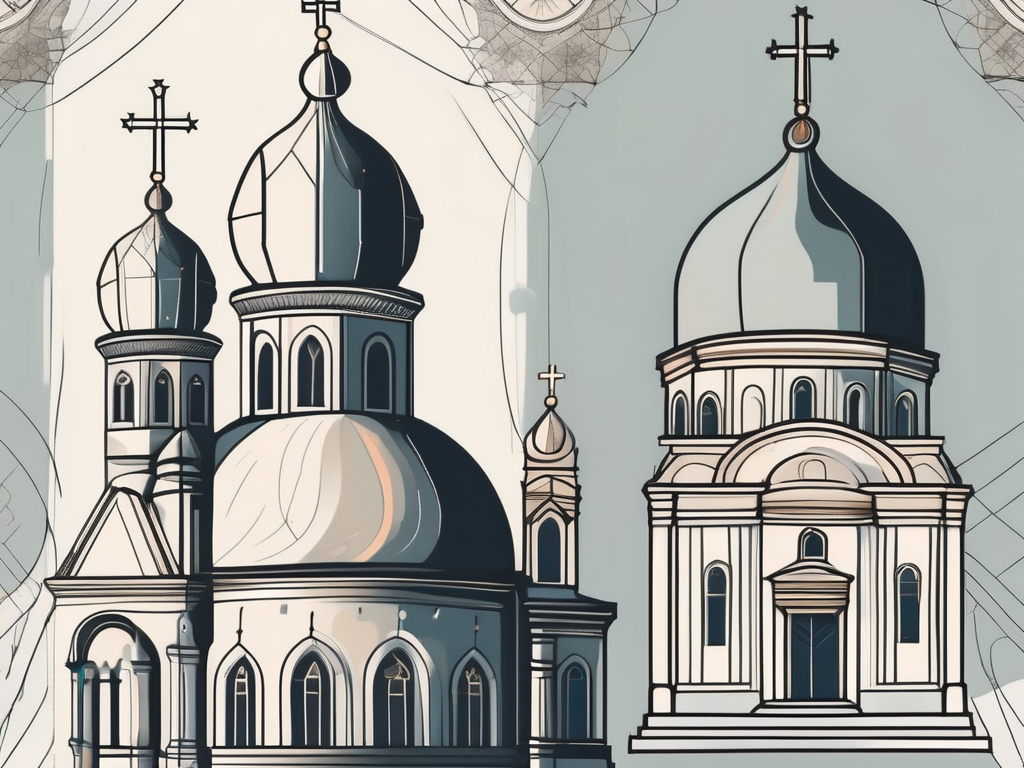Are you curious about the differences and similarities between Catholicism and Seventh Day Adventism? In this article, we will delve into the basic beliefs, historical background, worship practices, interpretation of the Bible, and role of church leaders in both these religious traditions. By the end, you’ll gain a better understanding of these two branches of Christianity.
Understanding the Basic Beliefs
When it comes to understanding the basic beliefs of different Christian traditions, it is important to delve into the rich and diverse tapestry of religious thought that exists within the realm of Christianity. Two such traditions that warrant exploration are Catholicism and Seventh Day Adventism.
Core Beliefs of Catholicism
Catholicism, a tradition that traces its roots back to the time of Jesus Christ, encompasses a vast array of beliefs and practices. At the heart of Catholicism lies the authority and teachings of the Pope, who is regarded as the successor of Saint Peter, the first Pope. This belief in the Papacy sets Catholicism apart from other Christian denominations.
Central to Catholic theology is the concept of the Holy Trinity, which asserts that God exists as three distinct persons – the Father, the Son (Jesus Christ), and the Holy Spirit – while remaining one divine being. This belief in the Trinity forms the bedrock of Catholic faith.
In addition to the Holy Trinity, Catholics also hold firm to the sacraments, which are considered sacred rituals that convey divine grace. These sacraments include baptism, confirmation, the Eucharist (also known as Holy Communion), reconciliation, anointing of the sick, holy orders, and matrimony. Each of these sacraments plays a crucial role in the spiritual journey of a Catholic believer.
Furthermore, Catholics embrace the concept of original sin, which posits that all human beings inherit a fallen nature due to the disobedience of Adam and Eve in the Garden of Eden. This belief underscores the need for redemption and salvation through faith in Jesus Christ and the performance of good works.
Within the realm of Catholicism, there are several other doctrinal beliefs that are held dear. One such belief is the perpetual virginity of Mary, the mother of Jesus. Catholics believe that Mary remained a virgin throughout her life, even after giving birth to Jesus.
Additionally, the sanctity of life from conception to natural death is a fundamental belief within Catholicism. This belief underpins the Church’s stance on issues such as abortion, euthanasia, and capital punishment.
Another cornerstone of Catholic belief is the real presence of Jesus in the Eucharist. Catholics believe that during the celebration of the Mass, the bread and wine used in the sacrament of the Eucharist become the actual body and blood of Jesus Christ.
It is important to note that the Catholic Church places great importance on tradition, scripture, and the Magisterium – the teaching authority of the Church. These three pillars work in harmony to guide the beliefs and practices of Catholics around the world.
Fundamental Beliefs of Seventh Day Adventists
Seventh Day Adventism, a relatively young Christian denomination that emerged in the 19th century, holds its own unique set of beliefs and practices. Founded on the teachings of William Miller, a Baptist preacher, Seventh Day Adventism places a strong emphasis on the imminent return of Jesus Christ.
One of the distinguishing beliefs of Seventh Day Adventists is their observance of the Sabbath on the seventh day of the week, which is Saturday, as outlined in the Ten Commandments. This practice sets them apart from other Christian denominations that observe Sunday as the day of worship.
Seventh Day Adventists also adhere to the belief in the Bible as the ultimate authority in matters of faith and practice. They consider the Bible to be divinely inspired and infallible, guiding their understanding of God’s will and providing a roadmap for righteous living.
In addition to their focus on spiritual matters, Seventh Day Adventists place great importance on holistic health and well-being. They advocate for a vegetarian diet, abstaining from the consumption of meat, and promote the idea that the body is a temple of the Holy Spirit, deserving of care and respect.
Another key belief within Seventh Day Adventism is the practice of baptism through immersion. They view baptism as a public declaration of one’s faith in Jesus Christ and a symbol of spiritual rebirth.
Seventh Day Adventists also emphasize the concept of the “great controversy” between good and evil. They believe that humanity is caught in the midst of a cosmic battle between God and Satan, and that individuals have a role to play in making choices that align with God’s will.
It is worth noting that while Catholicism and Seventh Day Adventism share some commonalities with other Christian traditions, they also possess unique beliefs and practices that set them apart. Understanding these differences can foster a deeper appreciation for the diversity within the Christian faith.
Historical Background and Development
The historical background and development of Catholicism and Seventh Day Adventism are fascinating and complex. Understanding their origins and growth provides valuable insights into the rich tapestry of religious history.
Origin and Growth of Catholicism
Catholicism traces its roots back to the teachings of Jesus Christ and the apostles. The early Christian community, led by figures such as Peter and Paul, spread the message of Christ throughout the Roman Empire. As Christianity gained followers, it faced persecution from the Roman authorities, but it continued to grow in strength and influence.
One of the pivotal moments in the history of Catholicism was the conversion of Emperor Constantine to Christianity in the 4th century. This event not only ended the persecution of Christians but also elevated Christianity to a position of power and privilege within the Roman Empire. With the support of the state, the Catholic Church began to establish itself as an institution with a hierarchical structure and a defined set of beliefs and practices.
Over the centuries, Catholicism became the dominant form of Christianity, spreading throughout Europe and much of the world through colonization and missionary work. Missionaries traveled to distant lands, bringing the message of Christ to indigenous peoples and establishing Catholic communities. The Catholic Church played a significant role in shaping the cultural, social, and political landscape of the regions where it took root.
The Catholic Church experienced significant historical events such as the Great Schism in 1054, which led to the division between the Roman Catholic Church and the Eastern Orthodox Church. This division had far-reaching consequences, both in terms of theology and politics, and it continues to shape the religious landscape of Eastern Europe and the Middle East to this day.
The Reformation in the 16th century also brought about the emergence of Protestantism and numerous religious conflicts. Figures like Martin Luther, John Calvin, and Huldrych Zwingli challenged the authority of the Catholic Church and sought to reform its practices. This period of religious upheaval led to the establishment of various Protestant denominations, each with its own distinct beliefs and practices.
Emergence and Expansion of Seventh Day Adventism
Seventh Day Adventism originated in the United States during the mid-19th century from the Millerite movement. The Millerites, led by William Miller, believed that the Second Coming of Christ was imminent and that the end of the world was near. Although the predicted date of Christ’s return passed without incident, the Millerite movement laid the foundation for the development of Seventh Day Adventism.
One of the key figures in the emergence of Seventh Day Adventism was Ellen G. White. Through her visions and writings, she played a crucial role in shaping the beliefs and practices of this denomination. White’s teachings emphasized the importance of observing the Sabbath on the seventh day of the week, as well as the significance of healthy living and education.
Seventh Day Adventism quickly gained followers through evangelistic efforts and missionary work. Adventist missionaries traveled to different parts of the world, spreading the message of their faith and establishing churches and educational institutions. Today, Seventh Day Adventism has a strong presence worldwide, with millions of adherents who actively engage in community outreach and education.
Seventh Day Adventists are known for their emphasis on health and wellness. They promote a vegetarian diet, exercise, and abstaining from harmful substances such as tobacco and alcohol. Adventist healthcare institutions and educational facilities have made significant contributions to society, providing quality medical care and education to communities around the world.
Furthermore, Seventh Day Adventists are actively involved in humanitarian work, disaster relief, and community development projects. Their commitment to social justice and equality is reflected in their efforts to alleviate poverty, promote education, and advocate for the rights of marginalized groups.
In conclusion, the historical background and development of Catholicism and Seventh Day Adventism are rich and multifaceted. From the early days of Christianity to the present, these two religious traditions have played significant roles in shaping the world we live in. Understanding their origins and growth provides valuable insights into the diversity and complexity of religious belief and practice.
Worship Practices and Rituals
Worship practices and rituals vary greatly among different religious traditions. These practices are deeply rooted in the beliefs and teachings of each faith, providing a meaningful way for followers to connect with the divine. In this discussion, we will explore the worship practices and rituals of two distinct Christian denominations: Catholicism and Seventh Day Adventism.
Catholic Worship and Sacraments
The Catholic Church places great importance on liturgical worship. Mass, which includes the celebration of the Eucharist, is central to Catholic worship. The Eucharist, also known as Holy Communion, is believed to be the true body and blood of Christ. This sacrament holds immense significance for Catholics, as it represents the ultimate sacrifice made by Jesus for the salvation of humanity.
Other sacraments, such as baptism, confirmation, and marriage, are also integral to Catholic worship. Baptism is seen as the initiation into the Christian community, where individuals are cleansed of original sin and become part of the Church. Confirmation, on the other hand, is a sacrament that strengthens and deepens the faith of those who have already been baptized. It is a moment of personal commitment to the Catholic faith.
The Catholic Church follows a liturgical calendar that dictates the celebration of various feast days and seasons, accompanied by specific prayers, hymns, and rituals. These liturgical celebrations provide a sense of unity and continuity among Catholics worldwide. They serve as reminders of important events in the life of Jesus, Mary, and the saints, allowing the faithful to reflect on their significance and draw closer to God.
Seventh Day Adventist Worship and Observances
Seventh Day Adventists, on the other hand, have distinct worship practices and observances. They emphasize worship on Saturdays, the Sabbath day according to the Ten Commandments. This day is seen as a time of rest, reflection, and spiritual renewal. It provides an opportunity for Seventh Day Adventists to disconnect from the demands of the world and focus on their relationship with God.
Seventh Day Adventist worship services typically include prayer, singing hymns, Bible study, and a sermon. These elements are designed to foster spiritual growth and understanding among the congregation. Bible study plays a central role in Seventh Day Adventist worship, as it allows individuals to delve deeper into the teachings of the Scriptures and apply them to their daily lives.
While they do not have sacraments like those found in Catholicism, Seventh Day Adventists do practice foot washing as a symbol of humility and service. This act of washing one another’s feet is seen as a way to emulate Jesus’ example of servanthood. It serves as a reminder to Seventh Day Adventists to humbly serve others and prioritize acts of kindness and compassion in their daily lives.
In addition to foot washing, Seventh Day Adventists also celebrate events such as baptism and communion. Baptism is viewed as a public declaration of one’s faith and commitment to God. Communion, also known as the Lord’s Supper, is a symbolic meal that commemorates Jesus’ sacrifice on the cross. These rituals hold deep spiritual significance for Seventh Day Adventists and provide a sense of unity and fellowship within the faith community.
Furthermore, Seventh Day Adventists observe special religious holidays such as the Day of Atonement. This solemn day is dedicated to seeking forgiveness for sins and reconciling with God. It is a time of introspection and repentance, allowing individuals to reflect on their actions and seek spiritual renewal.
In conclusion, worship practices and rituals are an integral part of religious traditions. They provide a structured and meaningful way for individuals to express their faith, connect with the divine, and foster a sense of community. Whether it is through sacraments, liturgical celebrations, or observances, these practices play a vital role in shaping the religious experiences of believers.
Interpretation of the Bible
Catholic Views on Bible Interpretation
The Catholic Church views the Bible as a divinely inspired text but also recognizes the authority of church tradition and the Magisterium in interpreting scripture. Catholics believe that the Pope, guided by the Holy Spirit, has the final authority in matters of faith and morals.
While individual Catholics are encouraged to read and study the Bible, it is understood that interpretation should align with the teachings of the Church and not contradict established doctrine.
Seventh Day Adventist Approach to the Scriptures
Seventh Day Adventists prioritize the study and interpretation of scripture. They believe in the principle of Sola Scriptura, meaning that the Bible alone is the ultimate authority for their beliefs and practices.
Seventh Day Adventists employ various methods of biblical interpretation, including historical and literary analysis, as well as cross-referencing passages to gain a comprehensive understanding of the text. They frequently engage in group Bible study to promote discussion and deeper insights into the scriptures.
Role of Church Leaders
Leadership Structure in Catholicism
The Catholic Church has a hierarchical leadership structure, with the Pope at the top. Bishops, who are ordained through the sacrament of Holy Orders, oversee individual dioceses, while priests serve in local parishes.
Catholics also recognize the importance of religious orders, such as monks and nuns, who commit their lives to prayer, service, and community work in accordance with specific devotions or charisms.
Leadership in the Seventh Day Adventist Church
The Seventh Day Adventist Church operates with a more decentralized system of leadership. Local churches are led by elected elders who work together in a committee known as the church board.
At a regional level, administrators, including pastors and lay leaders, oversee groups of churches called conferences. The General Conference, representing the global Adventist community, is responsible for setting policies and providing guidance for the entire denomination.
In conclusion, while Catholicism and Seventh Day Adventism both fall under the umbrella of Christianity, they differ in their core beliefs, historical development, worship practices, Bible interpretation, and leadership structures. By understanding these differences, we can foster greater appreciation and respect for the diversity within our religious traditions. Remember, it’s not about who is right or wrong, but rather about learning from one another and growing in our spiritual journeys.
